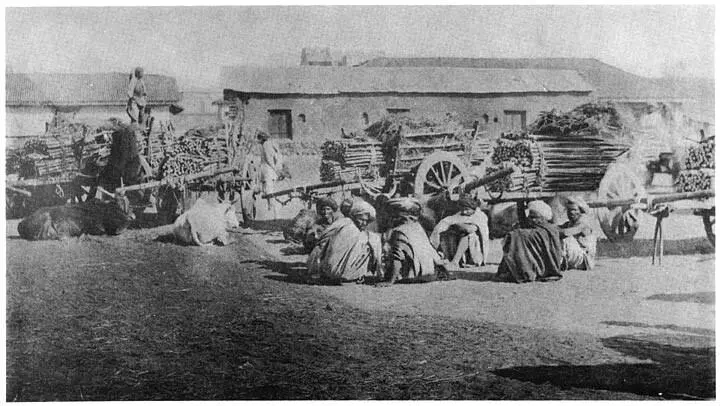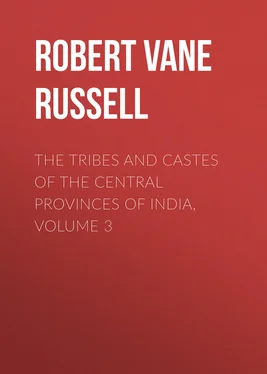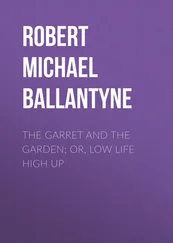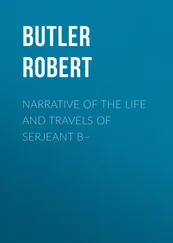Robert Vane Russell - The Tribes and Castes of the Central Provinces of India, Volume 3
Здесь есть возможность читать онлайн «Robert Vane Russell - The Tribes and Castes of the Central Provinces of India, Volume 3» — ознакомительный отрывок электронной книги совершенно бесплатно, а после прочтения отрывка купить полную версию. В некоторых случаях можно слушать аудио, скачать через торрент в формате fb2 и присутствует краткое содержание. Жанр: foreign_prose, История, foreign_edu, foreign_antique, на английском языке. Описание произведения, (предисловие) а так же отзывы посетителей доступны на портале библиотеки ЛибКат.
- Название:The Tribes and Castes of the Central Provinces of India, Volume 3
- Автор:
- Жанр:
- Год:неизвестен
- ISBN:нет данных
- Рейтинг книги:5 / 5. Голосов: 1
-
Избранное:Добавить в избранное
- Отзывы:
-
Ваша оценка:
- 100
- 1
- 2
- 3
- 4
- 5
The Tribes and Castes of the Central Provinces of India, Volume 3: краткое содержание, описание и аннотация
Предлагаем к чтению аннотацию, описание, краткое содержание или предисловие (зависит от того, что написал сам автор книги «The Tribes and Castes of the Central Provinces of India, Volume 3»). Если вы не нашли необходимую информацию о книге — напишите в комментариях, мы постараемся отыскать её.
The Tribes and Castes of the Central Provinces of India, Volume 3 — читать онлайн ознакомительный отрывок
Ниже представлен текст книги, разбитый по страницам. Система сохранения места последней прочитанной страницы, позволяет с удобством читать онлайн бесплатно книгу «The Tribes and Castes of the Central Provinces of India, Volume 3», без необходимости каждый раз заново искать на чём Вы остановились. Поставьте закладку, и сможете в любой момент перейти на страницу, на которой закончили чтение.
Интервал:
Закладка:
The Gonds can now count up to twenty, and beyond that they use the word kori or a score, in talking of cattle, grain or rupees, so that this, perhaps, takes them up to twenty score. They say they learnt to count up to twenty on their ten fingers and ten toes.
60. Villages and houses
When residing in the centre of a Hindu population the Gonds inhabit mud houses, like the low-class Hindus. But in the jungles their huts are of bamboo matting plastered with mud, with thatched roofs. The internal arrangements are of the simplest kind, comprising two apartments separated from each other by a row of tall baskets, in which they store up their grain. Adjoining the house is a shed for cattle, and round both a bamboo fence for protection from wild beasts. In Bastar the walls of the hut are only four or five feet high, and the door three feet. Here there are one or two sheds, in which all the villagers store their grain in common, and no man steals another’s grain. In Gond villages the houses are seen perched about on little bluffs or other high ground, overlooking the fields, one, two and three together. The Gond does not like to live in a street. He likes a large bāri or fenced enclosure, about an acre in size, besides his house. In this he will grow mustard for sale, or his own annual supply of tobacco or vegetables. He arranges that the village cattle shall come and stand in the bāri on their way to and from pasture, and that the cows shall be milked there for some time. His family also perform natural functions in it, which the Hindus will not do in their fields. Thus the bāri gets well manured and will easily give two crops in the year, and the Gond sets great store by this field. When building a new house a man plants as the first post a pole of the sāj tree, and ties a bundle of thatching-grass round it, and buries a pice (¼d.) and a bhilawa nut beneath it. They feed two or three friends and scatter a little of the food over the post. The post is called Khirkhut Deo, and protects the house from harm.

Gonds with their bamboo carts at market
A brass or pewter dish and lota or drinking-vessel of the same material, a few earthen cooking-pots, a hatchet and a clay chilam or pipe-bowl comprise the furniture of a Gond.
61. Clothes and ornaments
In Sir R. Jenkins’ time, a century ago, the Gonds were represented as naked savages, living on roots and fruits, and hunting for strangers to sacrifice. About fifty years later, when Mr. Hislop wrote, the Māria women of the wilder tracts were said only to have a bundle of leafy twigs fastened with a string round their waist to cover them before and behind. Now men have a narrow strip of cloth round the waist and women a broader one, but in the south of Bastar they still leave their breasts uncovered. Here a woman covers her breasts for the first time when she becomes pregnant, and if a young woman did it, she would be thought to be big with child. In other localities men and women clothe themselves more like Hindus, but the women leave the greater part of the thighs bare, and men often have only one cloth round the loins and another small rag on the head. They have bangles of glass, brass and zinc, and large circlets of brass round the legs, though these are now being discarded. In Bastar both men and women have ten to twenty iron and brass hoops round their necks, and on to these rings of the same metal are strung. Rai Bahādur Panda Baijnāth counted 181 rings on one hoop round an old woman’s neck. In the Māria country the boys have small separate plots of land, which they cultivate themselves and use the proceeds as their pocket-money, and this enables them to indulge in a profusion of ornaments sometimes exceeding those worn by the girls. In Mandla women wear a number of strings of yellow and bluish-white beads. A married woman has both colours, and several cowries tied to the end of the necklace. Widows and girls may only wear the bluish-white beads without cowries, and a remarried widow may not have any yellow beads, but she can have one cowrie on her necklace. Yellow beads are thus confined to married women, yellow being the common wedding-colour. A Gond woman is not allowed to wear a choli or little jacket over the breasts. If she does she is put out of caste. This rule may arise from opposition to the adoption of Hindu customs and desire to retain a distinctive feature of dress, or it may be thought that the adoption of the choli might make Gond women weaker and unfitted for hard manual labour, like Hindu women. A Gond woman must not keep her cloth tucked up behind into her waist when she meets an elderly man of her own family, but must let it down so as to cover the upper part of her legs. If she omits to do this, on the occasion of the next wedding the Bhumka or caste priest will send some men to catch her, and when she is brought the man to whom she was disrespectful will put his right hand on the ground and she must make obeisance to it seven times, then to his left hand, then to a broom and pestle, and so on till she is tired out. When they have a sprain or swelling of the arm they make a ring of tree-fibre and wear this on the arm, and think that it will cure the sprain or swelling.
62. Ear-piercing
The ears of girls are pierced by a thorn, and the hole is enlarged by putting in small pieces of wood or peacock’s feathers. Gond women wear in their ears the tarkhi or a little slab in shape like a palm-leaf, covered with coloured glass and fixed on to a stalk of hemp-fibre nearly an inch thick, which goes through the ear; or they wear the silver shield-shaped ornament called dhāra , which is described in the article on Sunār. In Bastar the women have their ears pierced in a dozen or more places, and have a small ring in each hole. If a woman gets her ear torn through she is simply put out of caste and has to give a feast for readmission, and is not kept out of caste till it heals, like a Hindu woman.
63. Hair
Gond men now cut their hair. Before scissors were obtainable it is said that they used to tie it up on their heads and chop off the ends with an axe, or burn them off. But the wilder Gonds often wear their hair long, and as it is seldom combed it gets tangled and matted. The Pandas or priests do not cut their hair. Women wear braids of false hair, of goats or other animals, twisted into their own to improve their appearance. In Mandla a Gond girl should not have her hair parted in the middle till she is married. When she is married this is done for the first time by the Baiga, who subsequently tattoos on her forehead the image of Chandi Māta. 89 89 See para. 65, Tattooing.
64. Bathing and washing clothes
Gonds, both men and women, do not bathe daily, but only wash their arms and legs. They think a complete bath once a month is sufficient. If a man gets ill he may think the god is angry with him for not bathing, and when he recovers he goes and has a good bath, and sometimes gives a feast. Hindus say that a Gond is only clean in the rains, when he gets a compulsory bath every day. In Bastar they seldom wash their clothes, as they think this impious, or else that the cloth would wear out too quickly if it were often washed. Here they set great store by their piece of cloth, and a woman will take it off before she cleans up her house, and do her work naked. It is probable that these wild Gonds, who could not weave, regarded the cloth as something miraculous and sacred, and, as already seen, the god Pālo is a piece of cloth. 90 90 See para. 41, Religion.
Интервал:
Закладка:
Похожие книги на «The Tribes and Castes of the Central Provinces of India, Volume 3»
Представляем Вашему вниманию похожие книги на «The Tribes and Castes of the Central Provinces of India, Volume 3» списком для выбора. Мы отобрали схожую по названию и смыслу литературу в надежде предоставить читателям больше вариантов отыскать новые, интересные, ещё непрочитанные произведения.
Обсуждение, отзывы о книге «The Tribes and Castes of the Central Provinces of India, Volume 3» и просто собственные мнения читателей. Оставьте ваши комментарии, напишите, что Вы думаете о произведении, его смысле или главных героях. Укажите что конкретно понравилось, а что нет, и почему Вы так считаете.












